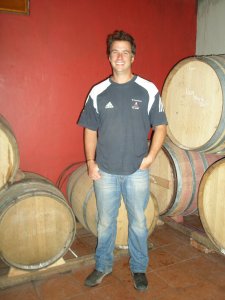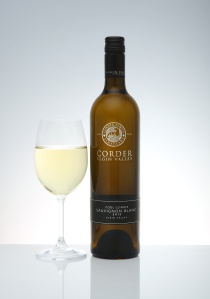Recently, I’ve been tasting and, more fortunately drinking, several wines with around 11% to 12% alcohol. You can’t believe what a pleasure this is and reminds me of the early 1980s when those levels were much more the norm.
The extra +-3% alcohol (it sounds little but the impact is, in many cases, immense) now reflected on labels, arrived with new, clean vine material. From this, grapes picked up sugar with an ease unknown in the old, virus-infected vines. By now, winemakers were more aware of harvesting when both pips and tannins were ripe, rather than making decisions on sugar levels alone. Unfortunately, by the time this happened, sugars had soared, reaching potential alcohol levels of 14% and over. At such levels, it happens that some fermentations wouldn’t complete to full dryness.
It didn’t take long for winemakers to discover winelovers enjoyed these lush, dense wines, their sweetness, acquired both from alcohol and residual sugar dimming the tannins (often highly extracted) that leave young reds so unpalatable. It was, as it still is, very much the time of buy now, drink now.
My colleague, Tim James, has covered here the negative issue of high alcohols and residual sugar, particularly in reds.
Ambitious producers then saw the opportunity of charging more, especially as more new small oak barrels became the maturation vessel of choice (remember one wine boasted – I think it was – 500% new oak). Many probably also believed, often correctly, that these blockbusters would do well on international competitions, thus raising both their own and South Africa’s profile abroad. Performing well on competitions and carrying all the attendant bling on the bottle is one thing, actually drinking the wine is another. The term ‘show wine’ is apt; drinking more than half a glass is an exercise in self-exhaustion; at least that’s my view and that of many friends and colleagues.
It was while chatting to Mick Craven and Jeanine Faure, who together make what, for the moment, are labelled Antipodean wines, that he wondered if winelovers would ever accept the more transparent, lower alcohol wines he and Jeanine favour and be willing to pay the sort of premium price that goes hand-in-hand with many of those blockbusters.
It would demand an enormous leap and change of attitude, but as more of the young guns with enquiring minds, explore, work in different wine areas of the world and taste as widely as they do, so South Africa is going to see the benefit in better wines.

I know when I first tasted Craig Hawkins’ Lammershoek wines, I found it difficult to describe them. My initial reaction was they seemed simple, not in a negative sense, but just the antithesis of those blockbusters – themselves are often decidedly one-dimensional. But once I sat with them, with a palate unsullied by those bigger wines, they really came to life.
Life through their freshness, bone dry finish and unexhausting alcohol, but not a level where the wine could be deemed insipid. In fact, they have wonderful flavour, layers of it with great purity; this is probably more difficult to discern when one has been used to the exaggerated fruit (and oak) flavours of those bigger wines, where more is more. Thanks in part to natural ferment and lack of new oak (neither Hawkins nor the Craven/Faure duo use any), flavours are more subtle. What you might imagine, correctly, is that these wines are far more compatible with food and lend themselves to finishing a bottle without tiring the palate.
Unfortunately, these wines are not made in any quantity, so are difficult to come by, though they are very reasonably priced as compared with some of those blockbusters. Maybe with time, as other winemakers and winelovers discover the pleasures of drinking wine without feeling exhausted after a sip or two, the wines will receive the recognition and prices they deserve.
 In lieu of the above-mentioned, Corder Sauvignon Blanc 2012 R80 ex-cellar fulfils their criteria except for natural ferment. This is by some way the best Elgin sauvignon I’ve tasted in a long time; Tim James, who tasted with me, was also enthusiastic. Its freshness belies its age, the flavours are agreeably restrained – more so thanks to a vibrancy beyond acidity – which makes it more food-friendly than many sauvignons. A moderate 12.5% alcohol helps on that score as well. The cherry on the top is the ex-cellar price of R80; excellent value for money.
In lieu of the above-mentioned, Corder Sauvignon Blanc 2012 R80 ex-cellar fulfils their criteria except for natural ferment. This is by some way the best Elgin sauvignon I’ve tasted in a long time; Tim James, who tasted with me, was also enthusiastic. Its freshness belies its age, the flavours are agreeably restrained – more so thanks to a vibrancy beyond acidity – which makes it more food-friendly than many sauvignons. A moderate 12.5% alcohol helps on that score as well. The cherry on the top is the ex-cellar price of R80; excellent value for money.
Strangely, the Corder Chardonnay 2012 R90, failed to fire as Elgin chardonnays usually do, seeming a little confected and lacking harmony.
Interesting Angela, and I hope you will encourage the lower abv for export! We could really do with more such wines in UK, especially as most restaurants have ‘forgotten’ they are legally obliged to offer 125 ml glasses and the new norm is 175 / 250 ml.
Interesting that you say Elgin Chardonnay usually misfires. For me there are some very fine Chardonnay coming from the region. Paul Cluver, Kershaw, Iona, Oak Valley, Almenkerk, Thelema Sutherland all hit the spot for me. I much prefer the area’s Chardonnay over its Sauvignon Blanc. Hennie
Hennie, I think if you read what I’ve written again, you’ll see I’ve said just the opposite – that Elgin chardonnays do fire, but this one failed to. It is certainly what I meant, not that it ususually misfires. I agree with you, Elgin chardonnays are distinctive and much better overall than their sauvignon blancs.